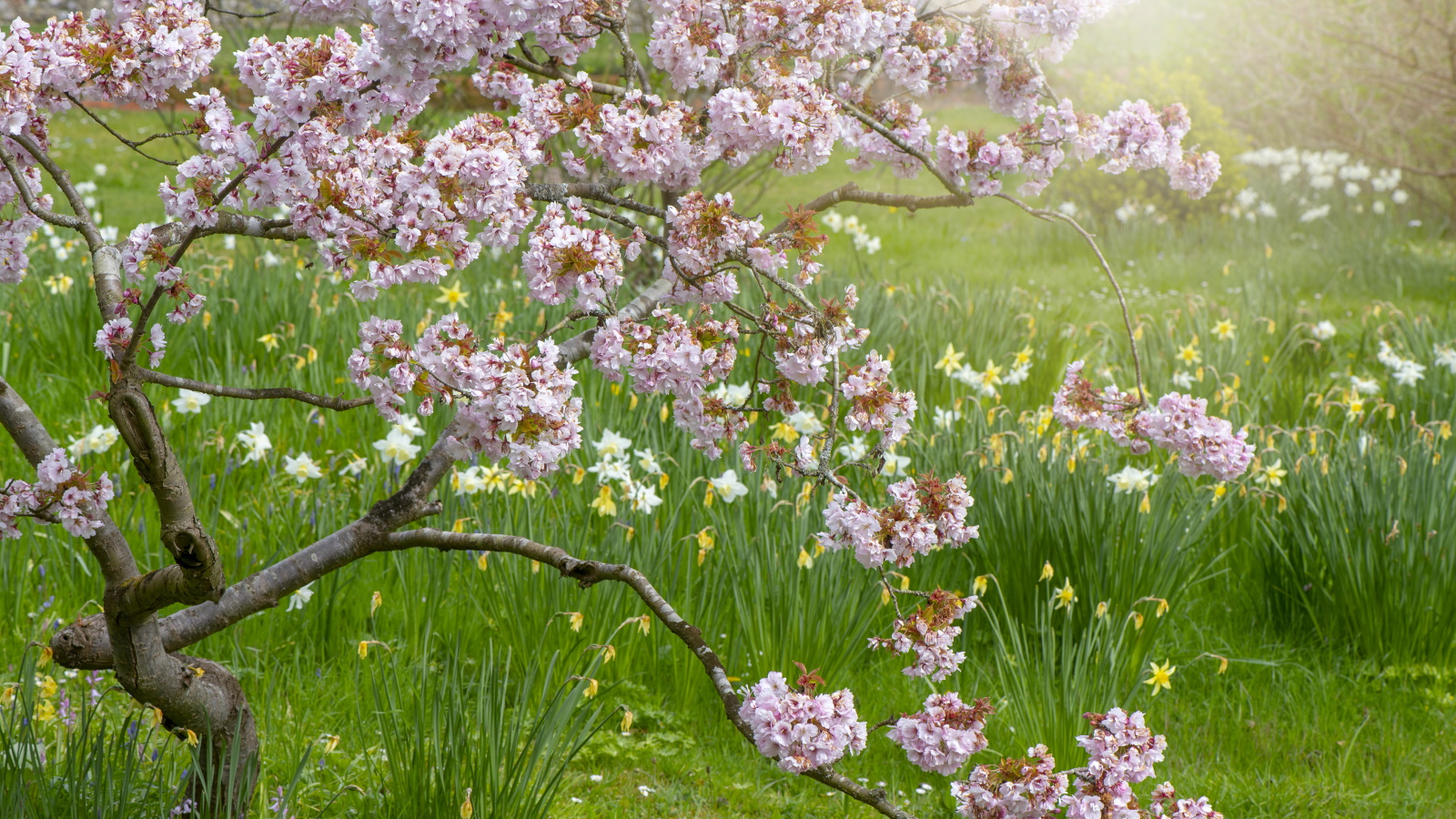
Trees are essential in any garden or backyard, adding structure, shade and privacy to our outside spaces. Many gardeners dote on their favorite shrubs or flowers, spending hours and hours nurturing and tending to them in the garden borders. However, is it time we celebrated and cared for mature trees just as much as our dahlias and zinnias?
Along with knowing how to choose a tree and how to plant a tree, it is important to understand the best long-term care approach, and this includes knowing how to fertilize. Even trees that are established or mature can sometimes need a little boost, and whether you have birch trees, Japanese maple trees, or any other tree for that matter, why not take the time to give your trees some love and care this year?
Here, experts reveal how and when to fertilize established and mature trees in your backyard, whether grown in the ground or in containers and importantly, reveal what tree fertilizer you should use for successful growing.
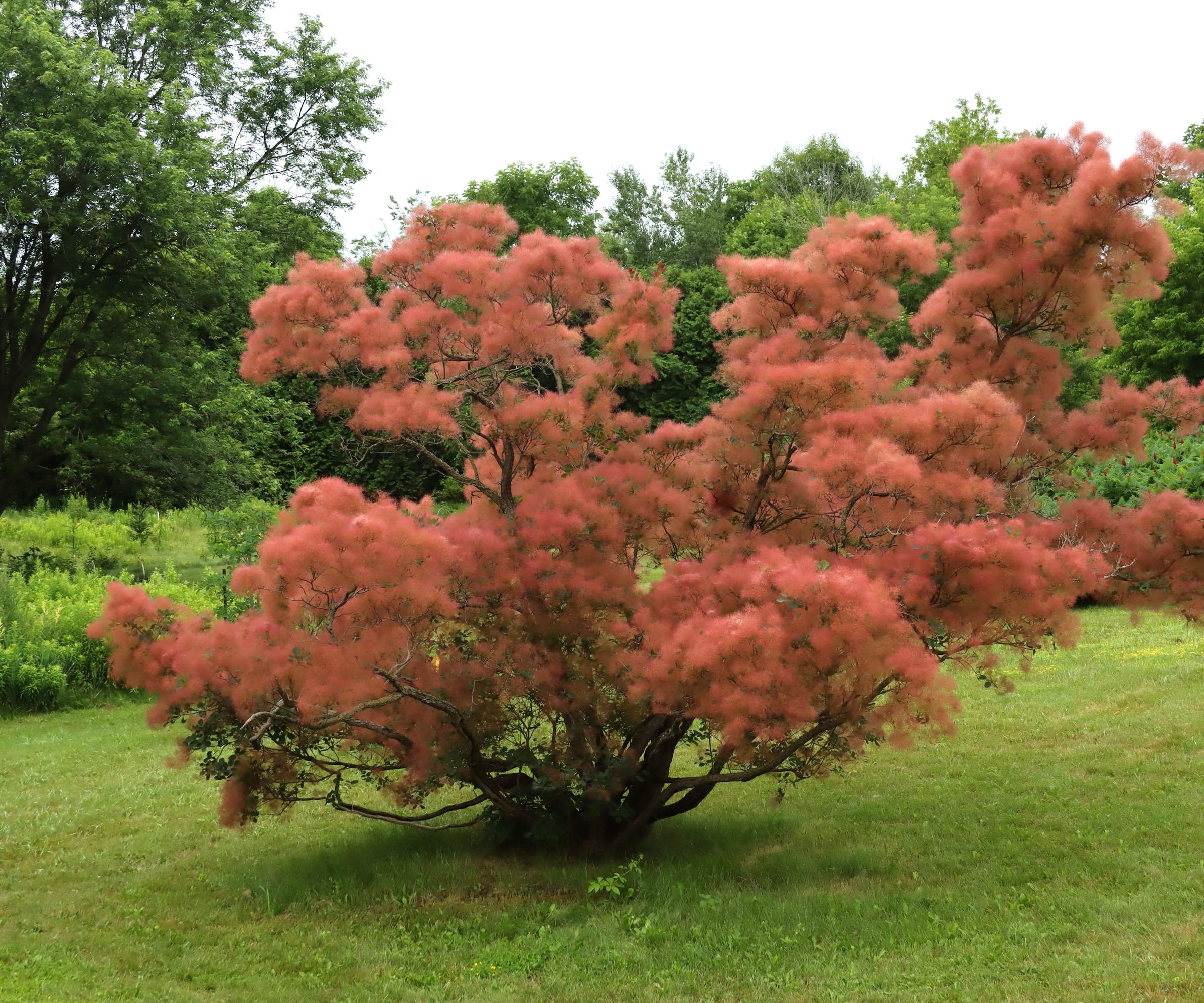
Should you fertilize established and mature trees?
Trees that grow in wooded areas are fertilized by decomposing material, rotting leaf litter, and other organic material recycled on the forest floor. Here, trees enjoy natural fertilizer and good-quality soil. However, in urban, designed environments, such as backyards, nutrients in the soil are less than what they would be in a forest.
For this reason, it is a good idea to add nutrients to the soil with regular fertilizer application. While trees can thrive on neglect when left alone in a forest, it can help to apply fertilizer every so often to those grown in your yard or garden, and your tree will be all the happier and healthier for it.
When to fertilize established and mature trees
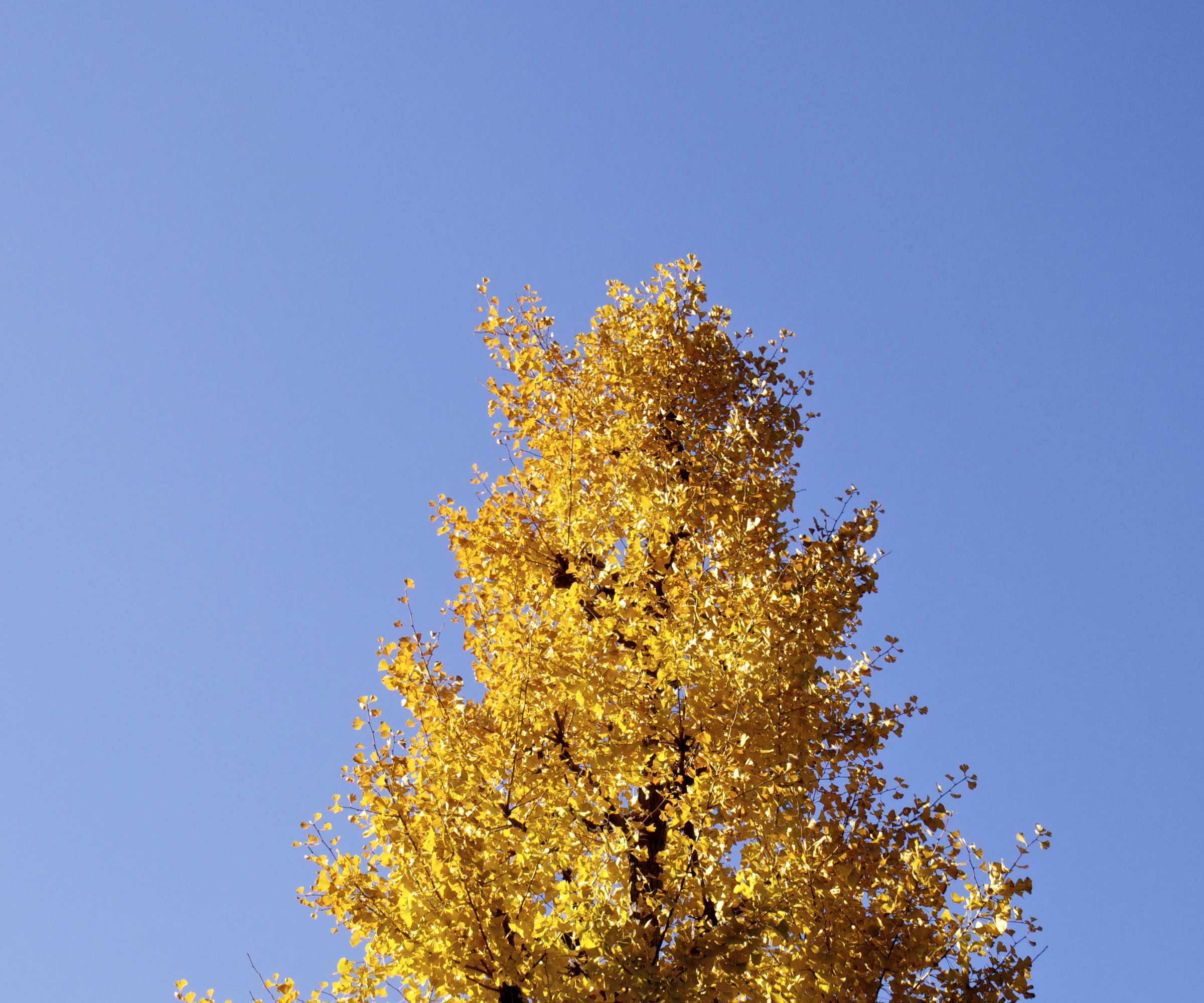
The trees in your backyard might appear healthy, even after years without feeding, but an annual application of fertilizer can help them perform even better.
'Established trees can benefit from feeding to provide essential nutrients for their growth and health,' says Autumn Hilliard-Knapp, horticulture specialist at Perfect Plants Nursery.
While the timing of this will vary depending on your US hardiness zone, 'it is recommended to feed established trees in spring as new growth starts to unfurl or in the early fall to support root development and overall vigor,' Autumn continues.' As for the frequency of feeding, it is generally suggested to feed established trees once a year.'
'I recommend using a root-boosting slow-release fertilizer for mature trees in the ground and those grown in containers,' Autumn says. 'I would apply this in the spring, as an excellent annual supplement to ensure that your trees reach their full potential and remain robust, attractive, and prosperous.'
Fertilizing your trees can help to keep them healthy and strong. This effective slow-release fertilizer in pellet form will work wonders, giving your trees a boost to provide long-term nutrition and plant growth.
How to fertilize established and mature trees
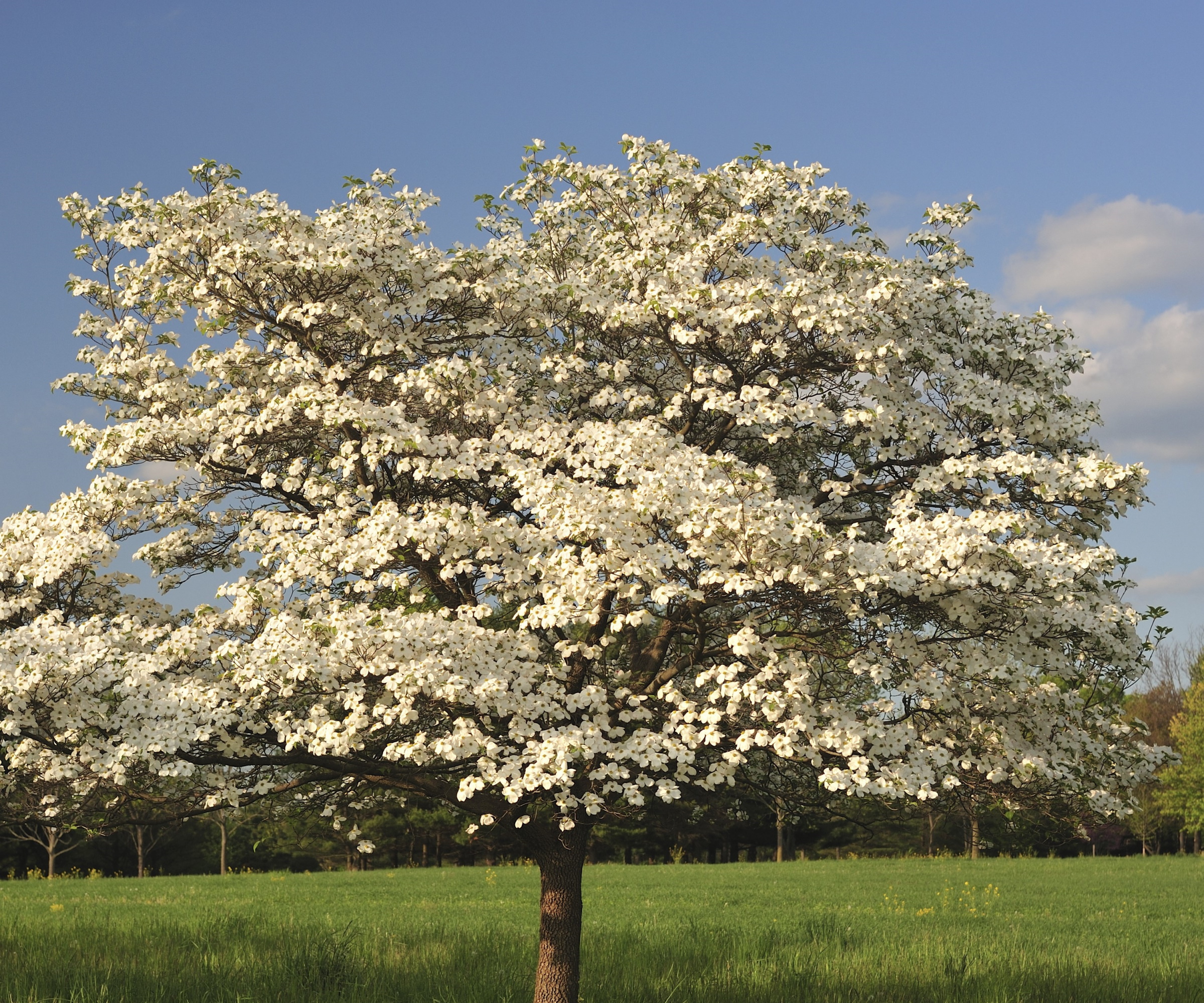
'Recently established trees that have been planted in the past few years should be fertilized in the spring and/or fall,' says Bert Bast, garden expert and owner of Bast Brothers Garden Center.
'I always apply organic products when tree fertilizing,' Bert continues. 'Use products that will add beneficial bacteria back into the soil that has been lost because of your planting, digging, or landscaping.' Bert recommends using something like Bio-Tone plant feed, available from Walmart, which can help to condition the soil.
For recently planted trees, even if they might be considered one of the best fast-growing trees, I would recommend using a feed high in phosphorus. This can help support healthy root growth during the first few years, so using something like an organic bone meal, available from Walmart, will encourage the tree to expend energy on root production, essential when the tree is establishing itself.
'Other, more mature trees in the yard can benefit from fertilizing as well,' Bert says, 'especially if you are clearing leaves and debris from under the canopy of the trees which is a natural fertilizer in forested areas that we might lose in our well-maintained yards.'
For larger, mature trees, apply a fertilizer high in nitrogen, which will support plant growth, healthy leaves and flower production. This should be done in springtime, just as your trees are beginning to produce new foliage.
For an easy option, consider using these organic tree feed spikes from Walmart, which can be placed in the ground around the tree at varying distances, and then forgotten about. The slow-release tree spikes will do the work for you, helping to give your tree a healthy, full appearance.
'In terms of how much fertilizer to apply, always consult the manufacturer specifications and the instructions on the packaging,' Bert says, 'as they can change from product to product.' Typically, when using organic products on mature and established trees, 'it is only a spring and/or fall application, but again this can change from product to product,' Bert adds.
Finally, consider applying good-quality mulch to your borders and underneath shrubs and trees. Doing so will help to continually add nutrients and goodness to the soil. I tend to mulch heavily in the fall, and then top up as necessary through the growing season. Mulching around trees can also help to retain moisture in the soil during the heat of summer, which can help to support your trees during the warmer months.
This organic tree feed will help your large, mature and recently planted trees to grow. Annual applications of tree fertilizer can help to promote better growth and see a better harvest of fruits.
Fertilizing trees grown in pots
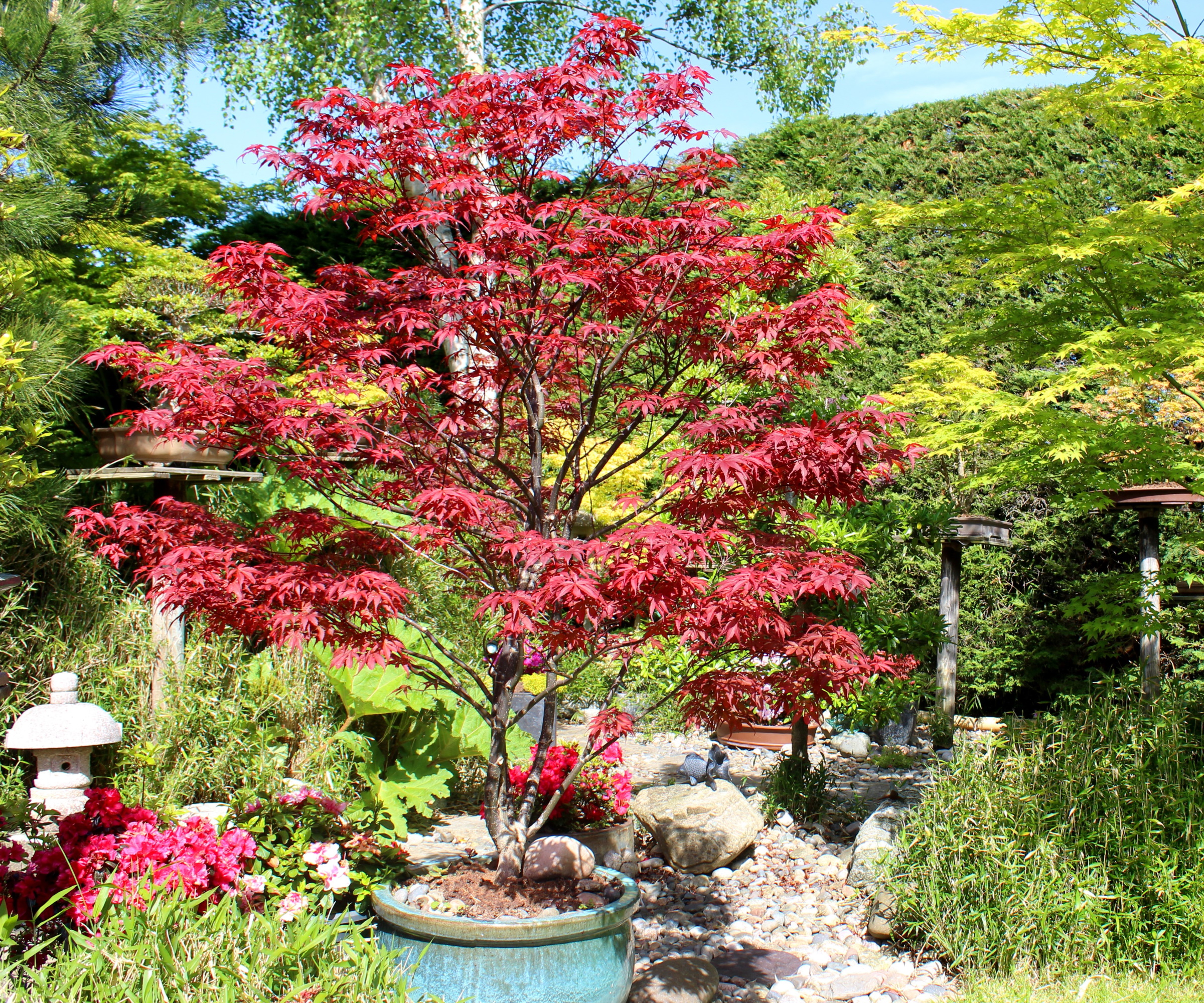
Many gardeners do not have large backyards but can still enjoy growing small and medium-sized trees. Indeed, some of the best trees for small gardens are suitable for pot growing on patios, balconies and terraces.
These container-grown trees need fertilizing, more so than trees grown in the ground. Remember that container-grown trees rely on you for water and nutrients, and their limited growing space can prove challenging for tree health.
I would recommend giving these trees a boost by adding fresh soil and mulch to the top of the pots every year towards the end of winter or in spring, mixing in a slow-release, high-nitrogen fertilizer that will help feed your tree for the growing season and encourage new, lush growth.
FAQs
Is it better to apply a liquid feed or slow-release fertilizer for trees?
All fertilizers add nutrients to the soil, so it is your preference as to what type you use. Slow-release fertilizers feed the tree over a long period, whereas a heavy liquid feed in spring can kick-start your tree into growth mode and results will be quicker, but short-term. I tend to prefer using slow-release fertilizers in containers, helping to remove the burden of regularly feeding pot plants in the growing season and opting for liquid feeds in the borders. However, different gardeners prefer different approaches.
While we might forget about our mature and established trees, it is important to give them some attention every so often. Annual feeding can help to improve tree health, foliage production and flower display, so it is worth gardeners taking the time to care for their trees.
For more tree care and advice, consider our guide on how to fertilize fruit trees, to get the best fruit out of your productive trees this year.







